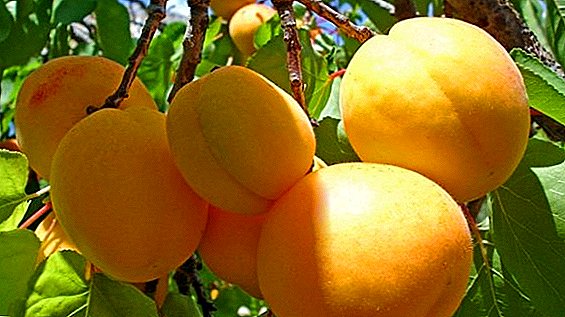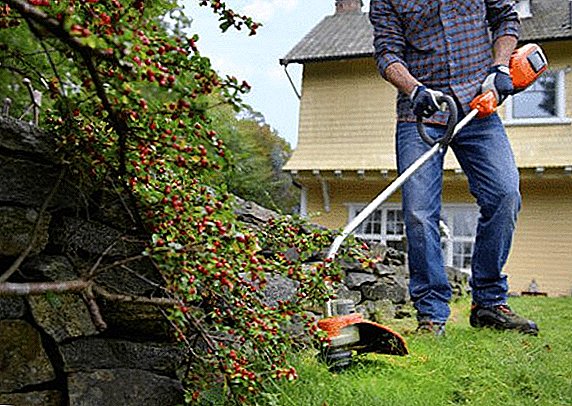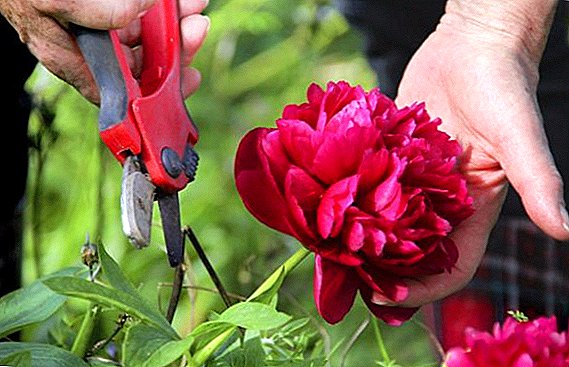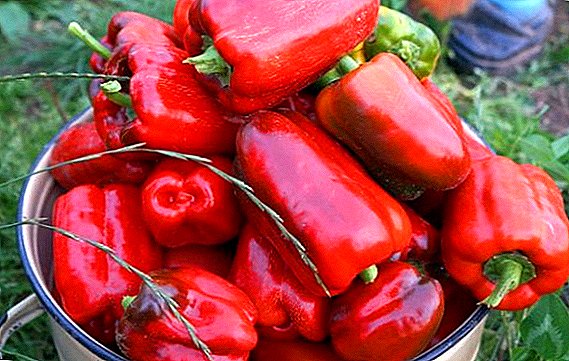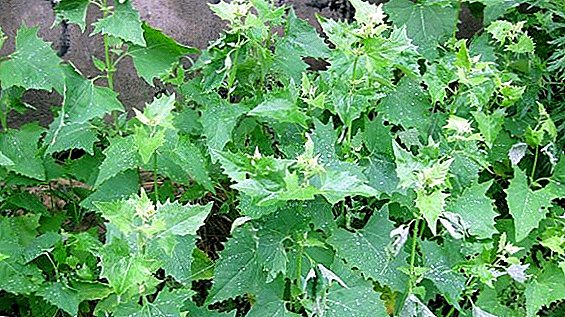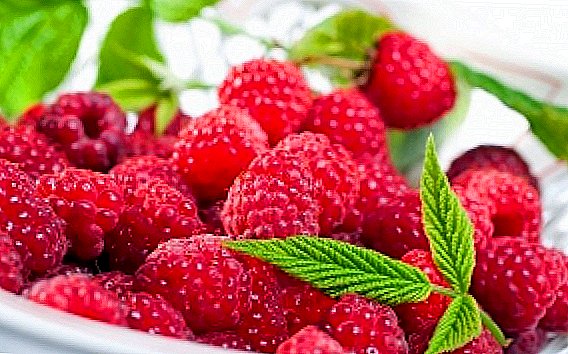 In the global poultry industry, there are many breeds of chickens, differing in direction of use, color, constitutional and exterior characteristics, productivity and other features. In the article we want to introduce you to one of them - Aurora Blue. We will tell about how this bird looks and what is necessary for its successful rearing.
In the global poultry industry, there are many breeds of chickens, differing in direction of use, color, constitutional and exterior characteristics, productivity and other features. In the article we want to introduce you to one of them - Aurora Blue. We will tell about how this bird looks and what is necessary for its successful rearing.
Inference history
About how the breed was derived (or rather, the breed group), today there is very scant information. This is known to be the work of Russian breeders, employees of the All-Russian Research Institute of Genetics and Breeding of Farm Animals (VNIIGRZH).  Breed Australorp black and motley color For hatching was selected Australorp. Scientists set themselves a slightly different goal - to bring a universal chicken. However, the result was breed group with excellent egg production and original appearancethat allow you to transfer it to both egg and decorative representatives.
Breed Australorp black and motley color For hatching was selected Australorp. Scientists set themselves a slightly different goal - to bring a universal chicken. However, the result was breed group with excellent egg production and original appearancethat allow you to transfer it to both egg and decorative representatives.  Breed group Aurora Blue In the second generation, the color of the Aurora splits - get blue, white and black chickens.
Breed group Aurora Blue In the second generation, the color of the Aurora splits - get blue, white and black chickens.
Did you know? The ancestors of domestic chickens became their wild Banking relatives who live in Asia. The most recent evidence gives reason to believe that the birds were domesticated about 6-8 thousand ago in the territory of Southeast Asia and China.
Description
As a result of breeding work on the breeding of the Aurora, medium-sized chickens with excellent productivity, attractive dense and dense plumage, which easily stand out among other breeds, appeared.
Appearance and physique
Birds of the Aurora breed group have a body of a somewhat elongated format. Their body is harmonious. The henchas have small neat heads, located on medium in thickness and short necks. Roosters have larger heads. Both sexes have a comb in the form of a leaf of bright red color.  The eyes of these poultry are large, brown or orange. Beak in size is small. In color it is in harmony with the paws - in gray-blue tones.
The eyes of these poultry are large, brown or orange. Beak in size is small. In color it is in harmony with the paws - in gray-blue tones.
Both chickens and roosters look very beautiful - their plumage is blue with a darker edging. Feathers of the female are painted evenly. And in males, the back, wings, and mane are slightly darker than the base color.
Important! The pale pink color of the crest in aurora chickens indicates a bird’s disease or poor housing conditions.
Character
This breed can not be attributed to the birds with a simple character. They are characterized by fearfulness, caution, and unsociability. People usually eschew even their masters.  However, the birds are active, curious and friendly. Conflicts in their community are quite rare. They can easily be kept with different species - even males get along with other breeds of roosters.
However, the birds are active, curious and friendly. Conflicts in their community are quite rare. They can easily be kept with different species - even males get along with other breeds of roosters.
Hatching instinct
Aurora hen breeds are distinguished by well-developed maternal instincts.
Juveniles are also bought or grown in an incubator.

Productivity
The productivity of aurora birds is primarily determined by such an indicator as egg production.
Important! It is worth noting that many factors may affect the egg production of chickens, such as age, parameters of the content, including the quality of lighting, diet, season. To achieve maximum productivity in Aurora chickens is possible only if they provide all the required conditions.
Live weight chicken and rooster
Both chickens and roosters of the Aurora breed have a compact, not massive body. The average weight of roosters - 2.5-3 kg, hen - 2-2.5 kg.
Puberty and annual egg production
Eggs begin to carry eggs upon reaching them 4 months old. It was noticed that early ripeness strongly depends on what time of year the chicken was born. So, before others, birds that were born from February to March begin to rush. This is due to the duration of daylight hours.
The peak of egg production is observed in birds that are one year old. In subsequent years, this figure is reduced by 15-20% annually.  The average annual productivity of one layer - 200-220 large eggs weighing 55-58 g each. As a rule, their shells are white.
The average annual productivity of one layer - 200-220 large eggs weighing 55-58 g each. As a rule, their shells are white.
These egg layers are considered good. If you compare with highly productive pedigree chickens, they can produce up to 370 eggs per year. Thus, the leggings are considered leggorn leggorn, whose representative in 1970 set a world record, laying a record 371 eggs.
High rates of egg production and beautiful appearance are distinguished by lakenfelder, bielefelder, barnevelder, araucana, silver brekel, legbar, maran.
Diet
In order to maximize the productivity of the bird, it is necessary to create high-quality housing for it and make the right diet. Feeding should be carried out twice a day - in the morning and in the evening, provided that during the day the birds walk and independently feed themselves. If the possibility of walking is not, then feeding should be done three times a day. Chickens feed 3-4 times a day.
The diet can be made of purchased feedby adding grain, grass and vegetable tops. Or knead the food themselves, making a "wet mash".
Compound feed is a mixture of various means (grains, legumes, oilcake, hay, vitamins and minerals) suitable for feeding animals and birds. They are thoroughly cleaned, crushed and selected according to certain recipes.
Let us consider in more detail how to make a bird menu correctly, depending on the different periods of its life.
Chickens
At an early stage of development, chickens are given mash, which includes:
- greenery;
- eggs;
- cereals.
Cottage cheese, vegetables, yeast are added to slightly grown chicks. In the adult diet they are transferred at the age of two months. 
Adult chickens
A sample menu for one day for one adult individual of the Aurora breed group may look as follows:
- grain (with a predominance of wheat) - 60-65 g in summer, 70-75 g in winter;
- bran - 20-25 g;
- vegetables - 100 g;
- fish meal, chalk - 5 g;
- salt - 1 g.
There are also recommendations for this. eggplant menu:
- grain (corn, barley, oats, wheat) - 120 g;
- mash - 30 g;
- boiled potatoes - 100 g;
- chalk, salt, bone meal, yeast - 2 g.
Thus, cereals are the main element in the nutrition of domestic chickens.
Important! It is necessary to strictly adhere to the recommendations on the volume of feed. Overfed or underfed bird develops health problems.
Feed for the winter period is harvested in advance. Root crops, pumpkin, zucchini, cabbage, dried hay, cake from sunflower and barley are required.  For nutritional value, the daily rate of feed should contain 15 g of proteins, 4 g of fat and 50 g of carbohydrates.
For nutritional value, the daily rate of feed should contain 15 g of proteins, 4 g of fat and 50 g of carbohydrates.
Since chickens after a while monotonous feed bored, the menu must be periodically replaced.
It is also important not to forget that birds need water. Chickens suffering from excess fluid will reduce productivity. Therefore, in the chicken coop and on the run, drinkers should be installed, to which the birds constantly have access. Water will need to be changed daily.
During the molting period
During the molting period, which, as a rule, occurs in October-November, productivity decreases in chickens, since all the efforts of the organism go to grow new plumage. At this time the bird need more proteintherefore, more protein-containing foods should be included in the feed. This may be a mash based on meat broth, dairy products (cottage cheese, yogurt). Also important components of the menu are boiled vegetables, chalk, mineral supplements, vitamin food supplements. In the absence of the possibility of walking the bird, it should be in the diet of sand, clay. 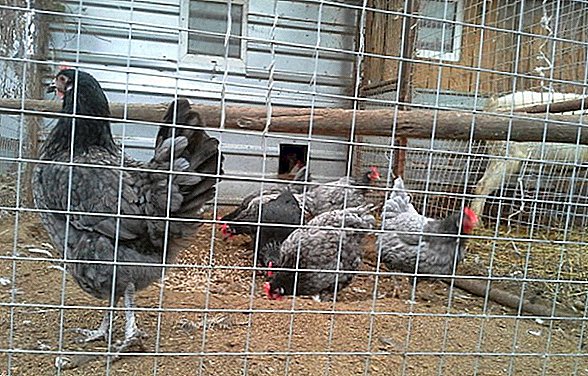
Content Features
Representatives of the Aurora breed do not need any special conditions - the same content recommendations apply to them as for other breeds of the egg-bearing direction.
In the chicken coop and on the walk
These chickens can easily live in unheated chicken coops, however, while maintaining a warm temperature in the region of + 23-25 ° C, their productivity will be much higher. In winter, the thermometer in the room for chickens should not fall below 15 ° C.
The chicken coop should be spacious - at least 2-3 hens should fall at least 1 square meter. m square. Representatives of this breed love to live on multi-level perches.
Learn how to choose a ready-made chicken coop, as well as independently make and equip a dwelling for chickens.
The room where chickens live should be clean and dry. High humidity and dirt will lead to a decrease in egg production and the development of diseases in domestic birds. Pest control should be carried out regularly and birds should be vaccinated against common infections.
There must be at least one in the hen house window for access to fresh air and daylight. If there are no windows, then the room should be equipped with a good ventilation system.  Duration of daylight for year-round egg production should be maintained at 16 hours, so in the winter period should be set additional light sources. During the period of molting, the light day should be reduced.
Duration of daylight for year-round egg production should be maintained at 16 hours, so in the winter period should be set additional light sources. During the period of molting, the light day should be reduced.
The coop must be equipped with nests. In one nest 5-6 hens can be carried. Also required attributes - feeders and drinkers. Feeding trough should be calculated from the parameters of 10-15 cm per individual. Drinkers should contain 5-6 liters of water.
Put on the floor litter of straw, hay, sawdust or other materials. In winter, in unheated conditions, it should be filled with a layer of at least 50 cm. The litter should be replaced regularly.
Fermentation chicken litter improves the life of birds and makes it easier to maintain premises.
Whenever possible it is necessary to equip aviary for walking birds. It should also be spacious - at the rate of not less than 1 square. m on 1 hen. The aviary should be under the trees, covered with a net, and also have a shelter under which birds can hide in case of bad weather. Place for walking should be equipped with feeders and watering. 
Is it possible to breed in cages
Today, most poultry farms prefer the cellular content of chickens. Although Europeans recognized this method of laying hens inhumane and abandoned him. This method can be applied to home gardens. However, it is advisable only to maintain a large number of livestock, because it is too expensive. In addition, when kept in cramped hens, they will reduce productive indicators. In one cage can be located 5-7 individuals. Also, birds raised in this way have a less strong immune system, since they receive little fresh air, sunlight and little movement.
Did you know? Images of chickens were found in the tomb of Tutankhamen, presumably built around 1350 BC. In Egypt, archaeologists managed to unearth the remains of chickens, which are dated 685-525 years. BC.
Reviews about the breed group Aurora


Thus, the chickens of the Aurora breed group should be chosen by those who are looking for birds with good productivity, beautiful appearance, and unpretentious care. Aurora Blue is resistant to frost and is characterized by good performance indicators. When creating proper conditions for the birds in the chicken coop, as well as the correct diet, it is easy to get year-round egg production from each layer in the amount of 16-18 eggs per month.


